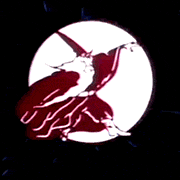|
"Fabricobbled" is the mostest perfectest word ever invented. e: goddamn new page no context post
|
|
|
|

|
| # ? May 25, 2024 23:03 |
|
Acid Reflux posted:"Fabricobbled" is the mostest perfectest word ever invented. Left handed thumb-detecting nut-fucker.
|
|
|
|
Pagan posted:So, just for fun (because I do have a garage) I found a deal like this.... How DOES one move a device like that? The heaviest thing I've had to move was an industrial sewing machine and an anvil, neither of which was over 400, so could be done by hand, carefully. The sane way would be using any combination of iron rods as rollers, engine hoists, gantry cranes, bobcats, and trailers to move the beast. Abom79 and Oxtools have done a few videos where they've moved large equipment without AvE's "If I die on camera, at least it will make a great Youtube vijeo" approach. Or hire a rigger and let a professional take care of everything. But thank god there is that crazy Canadian to entertain us from a safe distance.
|
|
|
|
Waldstein Sonata posted:The sane way would be using any combination of iron rods as rollers, engine hoists, gantry cranes, bobcats, and trailers to move the beast. Abom79 and Oxtools have done a few videos where they've moved large equipment without AvE's "If I die on camera, at least it will make a great Youtube vijeo" approach. Or hire a rigger and let a professional take care of everything. Be wary of bobcats (or anything that's not a forklift really) and moving heavy machinery. Bobcats bounce a lot, I saw a bridgeport bounce off of one at an auction on to concrete. The bridgeport died. 
|
|
|
|
unobtanium sintered pixie-dust drill bits.
|
|
|
|
now to explain so simply even I can understand it, you stick your plugger in the wall there and you get 120 v's of pixie dust...
|
|
|
|
Hu Fa Ted posted:Be wary of bobcats (or anything that's not a forklift really) and moving heavy machinery. Bobcats bounce a lot, I saw a bridgeport bounce off of one at an auction on to concrete. The bridgeport died. I have a bobcat and a set of forks which I abuse for many, many things they shouldn't be used for and this is spot on advice. You can do it, but you need to CRAWL along. Anything more than a few feet per minute at a time (and less on non-smooth surfaces) and you're begging to bounce and drop poo poo, especially when you do the kind of stupid poo poo I do and put way too heavy stuff on the front so you're basically ready to tip forwards all the time anyway.
|
|
|
|
babyeatingpsychopath posted:Left handed thumb-detecting Swedish nut-fucker. That he then gave to The Post Apocalyptic Inventor https://www.youtube.com/watch?v=7ScNWe3otkA quote:Dear Post Apocalyptic Inventor, There's been this weird circle developing between my favorite websites and youtube channels and they are all talking with each other. PAI, AvE, Applied Science, Mikeselectricstuff, Dave Jones (eevblog), bigclivedotcom, Hackaday, Clickspring, Bad Obsession Motorsports, engineerguy, jimmydiresta, Matthias Wandel, James Bruton, and TheBackyardScientist. Hell, even RegularOrdinarySwedishMealTime started wearing JonTron and Hackaday shirts. It's loving bizzare. Queen_Combat fucked around with this message at 02:41 on Jan 3, 2016 |
|
|
|
Geirskogul posted:There's been this weird circle developing between my favorite websites and youtube channels and they are all talking with each other. PAI, AvE, Applied Science, Mikeselectricstuff, Dave Jones (eevblog), bigclivedotcom, Hackaday, Clickspring, Bad Obsession Motorsports, engineerguy, jimmydiresta, Matthias Wandel, James Bruton, and TheBackyardScientist. Hell, even RegularOrdinarySwedishMealTime started wearing JonTron and Hackaday shirts. It's loving bizzare. Now I'm envisioning a youtube engineering/mad scientist super group. If someone with sufficient money and dangerously reckless safety standards hired that group and maybe the xkcd guy or similar for space maths they could beat NASA at bringing back an asteroid to earth orbit. AvE would certainly be on board, since asteroids is where all the easy to mine gold is. Anubis fucked around with this message at 06:57 on Jan 4, 2016 |
|
|
|
As an aside, thanks for the handy, compact list of youtube channels and poo poo I have to check out. And yeah, those Clickspring clock videos give me a stiffy. And that crazy milling machine rigging is a bit.... crazy.
|
|
|
|
Man, if only that wasn't literally on the other side of the state.
|
|
|
|
Acid Reflux posted:"Fabricobbled" is the mostest perfectest word ever invented. I've been really partial to his use of "it's not chinglish, its frandarin" comment in regards to the even sketchier french translations of already sketchy instructions in Canada.
|
|
|
|
Hate to take pleasure in people losing jobs or money, but seeing available and relatively cheap machine tools for sale is pretty nice.
|
|
|
|
I found a pretty big anvil near my place at this artist/ workshop thingy. It's outside and rusted and... cut perfectly in halves. I asked about it and was told it was a sculpture by some artist that he left behind when he moved, many many years ago. I was thinking of asking to buy it but I was told by another guy that a cast anvil cannot be welded together again, but a forged one can. How does one tell the difference?
|
|
|
|
What's involved in getting a good quality dial caliper repaired? I see quite a few Mitutoyo calipers for sale inexpensively that either need calibration or some small repair. Anyone went through that and cost-wise is it worth it? Or know what they charge?
|
|
|
|
His Divine Shadow posted:I found a pretty big anvil near my place at this artist/ workshop thingy. It's outside and rusted and... cut perfectly in halves. I asked about it and was told it was a sculpture by some artist that he left behind when he moved, many many years ago. I was thinking of asking to buy it but I was told by another guy that a cast anvil cannot be welded together again, but a forged one can. How does one tell the difference? Welding a bisected anvil back together sounds like a sufficiently-insanely-difficult project to undertake that I can't imagine it ever being worth it.
|
|
|
|
Thought depending on how large the halves are, they might still be useful on their own.
|
|
|
|
His Divine Shadow posted:I found a pretty big anvil near my place at this artist/ workshop thingy. It's outside and rusted and... cut perfectly in halves. I asked about it and was told it was a sculpture by some artist that he left behind when he moved, many many years ago. I was thinking of asking to buy it but I was told by another guy that a cast anvil cannot be welded together again, but a forged one can. How does one tell the difference? Cut in half vertically or horizontally? If it's just had the feet lopped off, I'd personally go for it. If it's been sliced vertically, the v-groove needed to weld it back together would be so goddamned large it'd be very much not worth it in time or money. In general, real anvils are forged steel or cast steel, both of which are weldable. Older anvils tend to be forged steel (great), and modern anvils tend to be cast steel (good). Touch it with an angle grinder. If you get sparks, it's at least a real anvil and not cast iron, which means it's potentially worth fixing. If it doesn't throw off sparks, it's cast iron, and complete garbage (and extremely difficult/impossible to weld).
|
|
|
|
Ambrose Burnside posted:Welding a bisected anvil back together sounds like a sufficiently-insanely-difficult project to undertake that I can't imagine it ever being worth it. An anvil of that size would be worth 500-1000 euros here. Welding an anvil sounds pretty easy as far as welding goes to me? Put the pieces together, cut grooves where the ends meet, clean faces and go to town with a stick welder. Hypnolobster posted:Cut in half vertically or horizontally? If it's just had the feet lopped off, I'd personally go for it. If it's been sliced vertically, the v-groove needed to weld it back together would be so goddamned large it'd be very much not worth it in time or money. It's cut down the middle, a front and back section. His Divine Shadow fucked around with this message at 09:07 on Jan 20, 2016 |
|
|
|
His Divine Shadow posted:Welding an anvil sounds pretty easy as far as welding goes to me? Put the pieces together, cut grooves where the ends meet, clean faces and go to town with a stick welder. Welding dimensionally-substantial steel carries its own significant technical and skill barriers. What alloy is the anvil? What rod type should you use? Does it require preheating to weld without cracking or getting weird? Do you have a kiln to do the preheat soak? Do you have a commercial welder capable of laying the bigass root pass you'll need? What about how the weld and weld site will disrupt the anvil's temper? Do you know how to temper a mass of steel that large?
|
|
|
|
Hypnolobster posted:Cut in half vertically or horizontally? If it's just had the feet lopped off, I'd personally go for it. If it's been sliced vertically, the v-groove needed to weld it back together would be so goddamned large it'd be very much not worth it in time or money. Lots of excellent old anvils are cast iron with tool steel tops forge-welded on. His Divine Shadow posted:An anvil of that size would be worth 500-1000 euros here. Welding an anvil sounds pretty easy as far as welding goes to me? Put the pieces together, cut grooves where the ends meet, clean faces and go to town with a stick welder. Assuming it's steel: gently caress stick welding. Forge weld it. Dig a hole, line it, put some clay pipes in for tuyeres with leaf blowers on them. Get or make a couple hundred pounds of charcoal, build a custom base to hold one half the anvil still with the cut face up. Get your two pieces yellow-white hot, flux the faces, then pick the bottom half out with a crane/multi-man rig and put it in the base. Grab the top half quick before the other half cools, put it on top, then get a couple dudes to help you smack it with sledges. Either it'll work or not. Big pieces of white-hot steel are gonna be a bit dangerous though. After you've got the two halves forge-welded back together, retemper the top. A video showing the rough scale of operation you'll need: https://www.youtube.com/watch?v=b5noM1NnXeE His Divine Shadow posted:I was told by another guy that a cast anvil cannot be welded together again, but a forged one can. How does one tell the difference? There's a bunch of ways, the easiest way being the Spark Test, but honestly brother if you're not 100% clear on how to tell iron from steel then you are just not at the level of knowledge you would need to be at to attempt any anvil-joining. I'd say save your money and lament that some dumbass cut an anvil in half. Uncle Enzo fucked around with this message at 18:29 on Jan 20, 2016 |
|
|
|
MASSIVE bevels and sub arc, then gouge out the backside till you're into the weld and more sub arc sounds like the best way to make it whole again. Doesn't sound cost effective.
|
|
|
|
If you want to get silly you could mill dovetails in each half then slot them together and let it rust till they stick.
|
|
|
|
Or you could use it as an excuse to buy an egregiously large milling machine, then mill both cut faces flat, mill some flat bolt head seats into various convenient spots, and bore holes for 1" bolts through that half on the bolt seats. Then drill and tap to 1-8 UNC on the other half in matching spots and bolt it together with TSC grade 8 bolts by the pound. Is it the right way? No, but I doubt you can shear or even loosen say a half dozen or a dozen 1-8 grade 8 bolts torqued to spec (720 foot pounds, 55k pounds clamp load per bolt) and loctited in place. Even after a decade of banging on it with a really big hammer.
|
|
|
|
Uncle Enzo posted:A video showing the rough scale of operation you'll need: Ah yeah, I remember that video. Those guys take way, way too long to get from the fire to their quench bath. I understand their thinking, they need a very large volume of water given how much energy is stored in the anvil, but they're giving it like a full minute of air-cooling before it gets into the water, and they didn't heat the entire anvil through, just the work surface.
|
|
|
|
So more effort than I figured on then. I had been thinking a shallow welding groove and basically just weld it together on the outside. Guess it's not durable enough then to do it that way. I don't really do much metalwork, just figured something to hit once in a while might be good to have.
|
|
|
|
If you don't need anything too massive then you can always hunt around for a foot or two of railway line and the stake it down onto a stump, That or you can ask you're local scrap metal joint to keep an eye for a good sized block of steel. If you don't do all that much metalwork anyway you probably wouldn't get all that much extra value from lugging a couple hundred kilos of steel home anyway. So long as its reasonably large and well affixed to something solid you can pretty much use anything, it's like any tool though, a proper anvil will make certain jobs easier.
|
|
|
|
wormil posted:What's involved in getting a good quality dial caliper repaired? I see quite a few Mitutoyo calipers for sale inexpensively that either need calibration or some small repair. Anyone went through that and cost-wise is it worth it? Or know what they charge? Count on it being about 1/2 the cost of that exact model or it's direct replacement if they no longer make that model. That is about what Starret charges, I'm sure Mitutoyo is close to the same.
|
|
|
|
Uncle Enzo posted:Lots of excellent old anvils are cast iron with tool steel tops forge-welded on. I have literally never heard of cast iron bodies with tool steel work faces before. Have any details? I'd like to read about these if they exist. Always thought cast iron didn't give good enough rebound energy to be worth it. Do you mean wrought iron /plain steel bodies with tool steel faces? I know those were pretty common. (Sorry, I'm not trying to be a dick.)
|
|
|
|
I don't know how you'd forge weld cast iron to anything, either. A random welding instructional website I found while googling for how to forge weld cast iron says it can't be done: http://www.welding-advisers.com/Forge-welding.html I find that a very large number of people in a lot of industries regularly confuse cast steel and cast iron, and some even confuse castings and forgings on a regular basis, so I wouldn't be surprised if this was another case of that.
|
|
|
|
Slung Blade posted:I have literally never heard of cast iron bodies with tool steel work faces before. Have any details? I'd like to read about these if they exist. Always thought cast iron didn't give good enough rebound energy to be worth it. kastein posted:I don't know how you'd forge weld cast iron to anything, either. A random welding instructional website I found while googling for how to forge weld cast iron says it can't be done: http://www.welding-advisers.com/Forge-welding.html You guys are right, I meant wrought iron, not cast. I always forget wrought iron exists.
|
|
|
|
iForge posted:Count on it being about 1/2 the cost of that exact model or it's direct replacement if they no longer make that model. That is about what Starret charges, I'm sure Mitutoyo is close to the same. Thanks. I had considered buying a used caliper and sending it in if needed but it doesn't seem cost effective.
|
|
|
|
So its not the same as building an ornate table or some absolutely epic repose work, but ive been flat out at work doing some fairly heavy steel work. We run a fleet of tractors with 3 point linkage mounted slashers on them- single disk 6' slashers, which are offset to the side and 8' twin disks which are evenly mounted. I work for National Parks and we use these to slash our fire tracks and fire breaks every year before summer. Because, we dont slash plain grass paddocks and slash tracks and fire breaks instead we're often dragging the slashers over rocky outcrops, smacking them into the ground due to the undulations and we hit all sorts of poo poo with the blades- stumps, rocks, rabbits, the ground, track berms etc. We get about 3 months use out of a set of 1/2" thick slasher blades before they are completely worn out and the mounting bolts are just about ruined. So its mid summer, so we've finished our slashing, so its repair season! First one in the shop is one of our offset units. This ones in for a couple of reasons- the skid plates are hosed from being worn away and its also been breaking off the debris chains. Our tractors are 100+ PTO horsepower, so anything the slasher blades hit gets thrown with a huge velocity and it snaps the welds holding the chains on, so some re-engineering was needed. First task was to remove the old skid plates off the side plates.  These have been repaired a few times before by simply welding on a new plate over whats left of the old one. As a result, there was about 4mm of plate left in the middle of the skid and at the ends where the three layers of steel have been laminated, it was 36mm thick! Had to oxy cut these off because theyre fully welded and a grinder wasnt a viable option. Bout now I wish I had a plasma cutter... Next up is welding on the new plates  The new 12mm steel plates are welded onto the skids- theyre fully welded on the outside and then stitch welded at about 200mm intervals on the inside. Makes them a pain to remove when its replacement time but it means they dont rip off when you hit a tree or a stump on a track edge. And then we had to bend up the ends.  So the slasher will go up over lumps, the ends are curved. Bending 12mm steel is a pain in the arse and you blow through SO Much oxy/acetylene its not funny. The epic shifter and weight is to keep tension on the bend against the side plate so i can tack it on before the next bend.  Bend all the way around and then cut off and linish the end to make it nice and smooth.  Pretty drat happy with my welds on this job. Tho its not hard to do a nice bead when your doing 90 degree root welds on 8mm and 12mm plate, just crank the amps! Think our machine was at around 260A for this work. So once both skids were done, it was time to re engineer the chain system to something more robust.  Starting off by creating this. Piece of 40x40x4 x 1950mm RHS steel, then cut a 10mm slot in it. I had to do this with a 5" angle grinder with a 1mm cutting disk- well, about a dozen 1mm cutting disks. I would have done quite dubious things to get my hands on a mill with an end mill or a plasma cutter by the time i had cut that and then cleared it out with the grinding disk... These slotted sections then got welded to the front and back of the slasher  And this is how the chains mount now- because how the chains constructed, you can use a link as a retainer, so all we do is cut off lengths of chain to the correct length and then slide them into the slot.  The ends have a bolt through that channel locking them in and are also held captive with by the side plates. This is better than the system we had before where they were just welded to the body of the slasher at one end and as soon as you reversed over a stump or into a rock, it snapped a chain off. At least now if something coming out of the slasher breaks a chain or two, we can stop and replace them in the field instead of having to get the machine back to the workshop. And fully stocked up with chains. Thats one end done.  The idea behind the debris chains is not that it STOPS stuff coming out, its more that it SLOWS stuff coming out so rocks go 10-20m instead of 100-200m. We had one rock this season come out of this slasher through a gap in the chains, go bouncing across a paddock for 100m and smash into a vehicle- Hence the redesign.  And repeat again for the front!  Of course, it didnt work the same at the front because the slashers been bent a few times, so some creative metal removal was needed. Also had to fix a few stress cracks in the 3 point linkage frame- you can see the new gussets above the bottom lift pins. Tomorrow is paint. Its been an interesting project- everything is SO drat HEAVY on this stuff- the side plates are in excess of 80kg each, the chain assemblies would be about 50kg each- the slasher itself is nearly 2 tonnes, so just simply holding things together to weld them isnt a simple process! I only set fire to the slasher once too, which i was impressed with. Except I set fire to the INSIDE of the 3 point linkage frame where all the grass and chaff has gotten stuck through the holes left for galvanising!
|
|
|
|
That's some heavy duty work, but impressive! I have a question for the blacksmiths. I've been asked to help redesign my local blacksmith shop. One of the things I'm trying to figure out, is a list of "standard smithing tools" that we need for classes. I'd like every anvil to have a similar setup. I'm curious what you all think would be an ideal generic setup for most basic operations? I'm thinking - a round punch, maybe two. A slot punch. Hot cut hardie tool... What else? We teach intro and intermediate smithing, and I want each work station to have the tools needed to perform the things we're teaching them.
|
|
|
|
Pagan posted:That's some heavy duty work, but impressive! Off the top of my head, for each station- -medium-weight crosspeen -medium-weight ballpeen -medium wolfjaw tongs -cutoff hardie -bending fork for hardie hole -bending bar with the same fork arrangement as the hardie tool -hot chisel -cold chisel -center punch -matched round punch and drift set corresponding to the most common rivet size the shop'll make use of, 1/4" or 5/16" prolly -bastard flat file for dressing all of the above as needed at a central storage point there should also be a small number of lighter and heavier crosspeens to accommodate smiths of different physical ability, as well as a couple sledges/bending forks with different dimensions/specialized tongs/etc punches and drifts are real useful but tbh beginners will unquestionably destroy them extremely fast and i'd bet that the effort of making them all would mostly be wasted e: on reflection a bending fork -and- bar is probably overkill, just the fork should suffice for most stuff. also a tape measure and steel rule/t-square would be useful, plus maybe a carbide scriber Ambrose Burnside fucked around with this message at 21:51 on Jan 29, 2016 |
|
|
|
observe the charming sowbug pendant, poorly photographed in its natural habitat 
|
|
|
|
Before I clicked to embiggen, I thought it was just a bead somebody welded onto a circle. On embiggening, whoa. I have to assume chasing and repousse? That looks really neat. Is it for an entomologist or something? Don't know many people who actually like those little guys. Either way, looks super neat.
|
|
|
|
its for a friend who's a big nerd for bugs. And yeah, chasing and repousse. normally I leave pieces "open", that is, the reverse shows the hollow negative, but that's usually not great for worn pieces because they don't sit smooth against the skin and it doesn't look 'polished', so i took a crack at riveting a flat backplate on and using the set rivets as an accent. adding a backplate also lets me work with much thinner gauges for the actual raised portion 'cause it substantially reinforces everything and adds weight. solid riveting is a pain in the rear end, but definitely not as bad as soldering, so whatever.
|
|
|
|
Pagan posted:That's some heavy duty work, but impressive! Ambrose's list is good. I'd add a stick of chalk or soapstone or something, handy for sketching things out on the anvil face or marking things up on your work piece. Also yeah, punches are useful but they will destroy them. So get them to make their own from some cheap drill rod or something  good way to learn about how different types of steel 'feel' when you're working them. Would be a nice take home project. good way to learn about how different types of steel 'feel' when you're working them. Would be a nice take home project.
|
|
|
|

|
| # ? May 25, 2024 23:03 |
|
Slung Blade posted:Ambrose's list is good. I'd add a stick of chalk or soapstone or something, handy for sketching things out on the anvil face or marking things up on your work piece. Oh god now I'm having nightmares about all those apprenticeship projects where I had to thread drill rod on a 60 year old clausing. Thanks for the triggering.
|
|
|




























